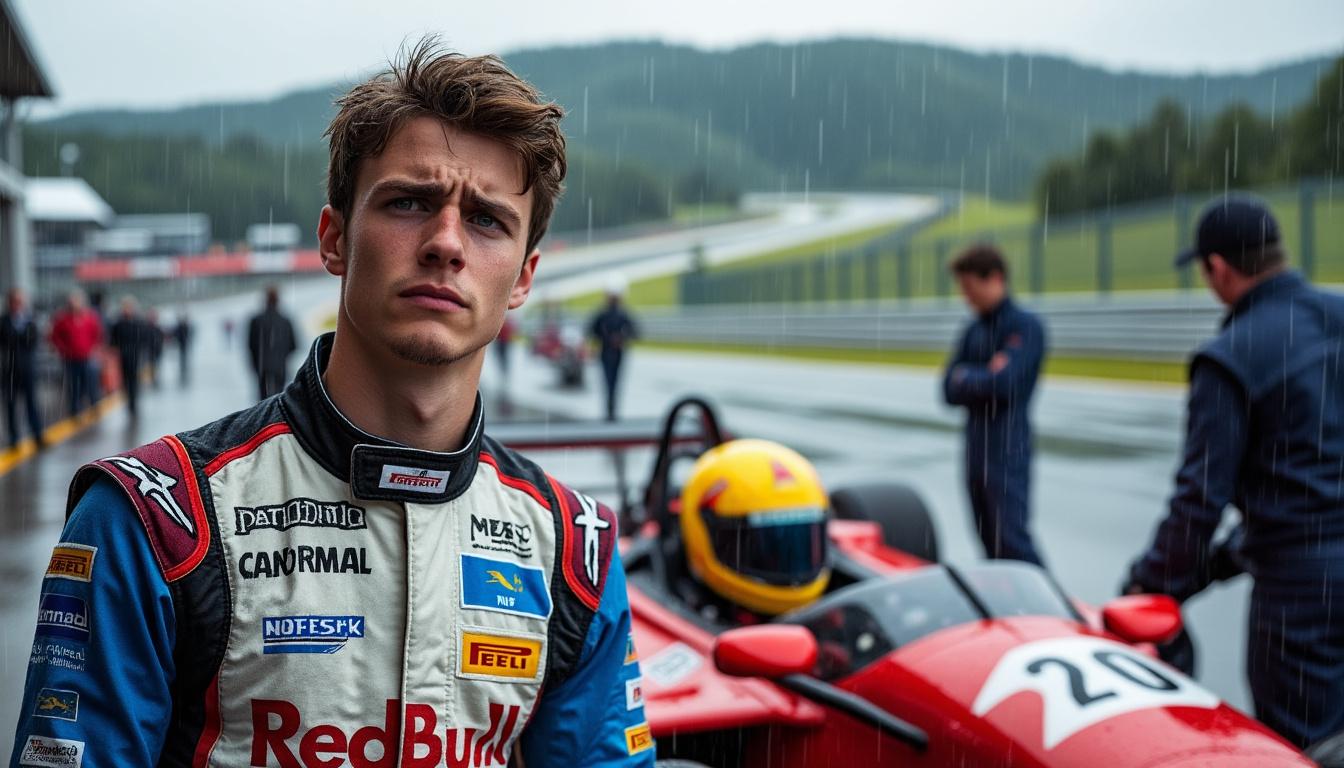Every millisecond counts in the high-stakes game of Formula 1 racing. Amidst the iconic twists of Spa-Francorchamps, even the smallest errors can lead to heartbreak. As drivers push the limits, the line between glory and disappointment narrows dramatically.
In the latest chapter of sprint qualifying, Liam Lawson experienced just how unforgiving this sport can be. After finishing in 11th place, mere fractions of a second separated him from a coveted spot in the final segment. The New Zealander clocked in at just 0.041 seconds behind Oscar Piastri, the driver in 10th, highlighting the intense competition that characterizes this thrilling track. Lawson expressed his frustration, noting that a seemingly minor mistake in the last chicane cost him a chance to continue. With the nuances of a long lap at Spa emphasizing every detail, he acknowledged that it’s the small margins that define success or failure. Despite the setback, Lawson remains hopeful and determined, eyeing the sprint race on the horizon where points await the top eight finishers. As teams are allowed modifications before the grand prix qualifying, Lawson’s ambition to improve his Friday performance burns brightly, motivated by the lessons learned from his previous run.

Liam Lawson made waves during the recent sprint qualifying at the iconic Spa-Francorchamps circuit, expressing his frustration over the minuscule margins separating the drivers. The New Zealander, who finished in 11th place, found himself just 0.041 seconds shy of a crucial top 10 spot, a position held by fellow competitor Oscar Piastri. Reflecting on his performance, Lawson highlighted the intricate dynamics of the circuit, shedding light on the peculiarities of sprint qualifying that amplify the pressure on drivers and teams alike.
The nature of racing at Spa-Francorchamps, a track known for its challenging layout and varying weather conditions, heightened the tension during the qualifying session. Lawson’s assertion that “it’s just small margins, which is crazy around here because it’s such a long lap” underscores the reality that even slight imperfections can lead to significant setbacks. In this environment, precision becomes paramount. The time spent negotiating the corners is amplified by the fact that even the smallest error can thwart a well-executed lap.
Racers like Lawson must constantly adapt to the conditions on the track, with each lap presenting new challenges. These tiny miscalculations can lead to substantial losses in time as they traverse the 7 km length of the circuit. His minor mistake in the last chicane, which ended up costing precious milliseconds, exemplifies how small details can dictate the outcome of a race and potentially affect championship standings. The margin of error is thinner than ever, reaffirming Lawson’s observations on the sheer intensity of competition in Formula 1.
What did Liam Lawson learn from his experience during sprint qualifying?
Liam Lawson’s experience during the sprint qualifying provided him with invaluable insights that are crucial for any aspiring racer. His disappointment with the results serves as a reminder that learning from setbacks is vital in the world of motorsport. Despite finishing outside the top ten, Lawson remained optimistic regarding his prospects for the upcoming sprint race, showing resilience and a commitment to continual improvement. Reflecting on his performance, he stated, “It’s just tiny things that make a difference, so it’s knocked us out.”
Analyzing this perspective reveals an essential takeaway: understanding the importance of focus and execution. Lawson acknowledges the rigorous demands of motorsport that require drivers to perform under immense pressure. Each decision made on the track translates to milliseconds that can be the difference between success and disappointment. This learning extends beyond the track—it’s a mentality that can resonate with various challenges in life and professional journeys.
His philosophical approach emphasizes that, while the margin of 0.041 seconds might seem negligible to the casual observer, to a driver, it embodies a world of lessons learned. Lawson’s determination to carry forward the “learnings from today and apply to qualifying tomorrow” showcases his understanding that each race is a stepping stone toward mastering the sport. This adaptive mindset is key for drivers like Lawson as they navigate the complexities of each circuit and evolve in their craft.
How does the nature of the circuit impact performance during qualifying?
Spa-Francorchamps is one of the most revered circuits in Formula 1, known for its unpredictability and technical challenges. With its combination of long straights, elevation changes, and complex corners, the circuit not only tests the drivers’ skill but also their machines’ capabilities. For Lawson, the distinguishing factor of Spa is its capacity to create situations where performance can fluctuate dramatically within a single lap. These attributes led him to remark on the “crazy” element of racing at Spa, where the smallest mistake could lead to an early exit.
The demanding track layout means that drivers need to approach qualifying with a meticulous mindset. Each corner requires precise line entry and exit to maximize speed, which makes the track more sensitive to wind and temperature shifts. These external factors play a significant role in tire performance and grip levels, making race weekend conditions unpredictable. In such an environment, teams must meticulously scout data and adjust strategies accordingly, often leading to intense discussions in the pit lane about how to conquer the unique challenges presented by Spa.
Lawson’s comments reveal the intricate relationship between a driver, their car, and the circuit—a triad that ultimately defines success. As he prepares for future races, Lawson indicates a clear understanding of how to analyze and tweak car settings based on extensive practice sessions, shaping his knowledge into tangible results. This ability to adapt to track changes not only serves him during the qualifying rounds but carries through to the longer races, making insights gained during sprint qualifiers integral to building overall performance.
What strategies might Liam Lawson adopt to improve his qualifying performance?
After the disappointment during this sprint qualifying, Lawson has numerous strategies at his disposal to fine-tune his performance moving forward. Recognizing the need for incremental improvements in each session can lead to better qualifying results. Lawson reflects on this necessity, stating, “Like every other weekend, it’s just extracting every little bit out of the car.” It shows his commitment to meticulous analysis and decision-making, essential qualities for thriving in the high-stakes arena of Formula 1.
One primary strategy involves a deep dive into data analysis. Teams have access to a wealth of information that can inform not just driving style but overall car performance. Lawson may reassess aspects such as tire management and engine settings that can impact lap time. Understanding how every component performs under varying conditions can inform the adjustments made when it matters most.
Moreover, the unpredictable nature of Race Day and qualifying gives Lawson the opportunity to experiment with his driving technique. Testing different lines and approaches during practice sessions can provide insights into how to conquer particularly tricky areas of the track without the pressure of a timed lap. Adapting driving styles based on real-time feedback is paramount in translating practice results into race success.
Lastly, Lawson’s interactions with his engineering team will be key in refining their shared approach to qualifying strategy. Increasing collaboration in tackling areas of concern as they arise will ensure that all aspects of performance are evaluated holistically. Emphasizing communication regarding feedback will assist not just in improving his individual performance, but can ultimately foster a more effective team dynamic.
By implementing these strategies, Liam Lawson could enhance his performance during sprint qualifying and work toward converting potential into results that allow him to aim higher in future races.
